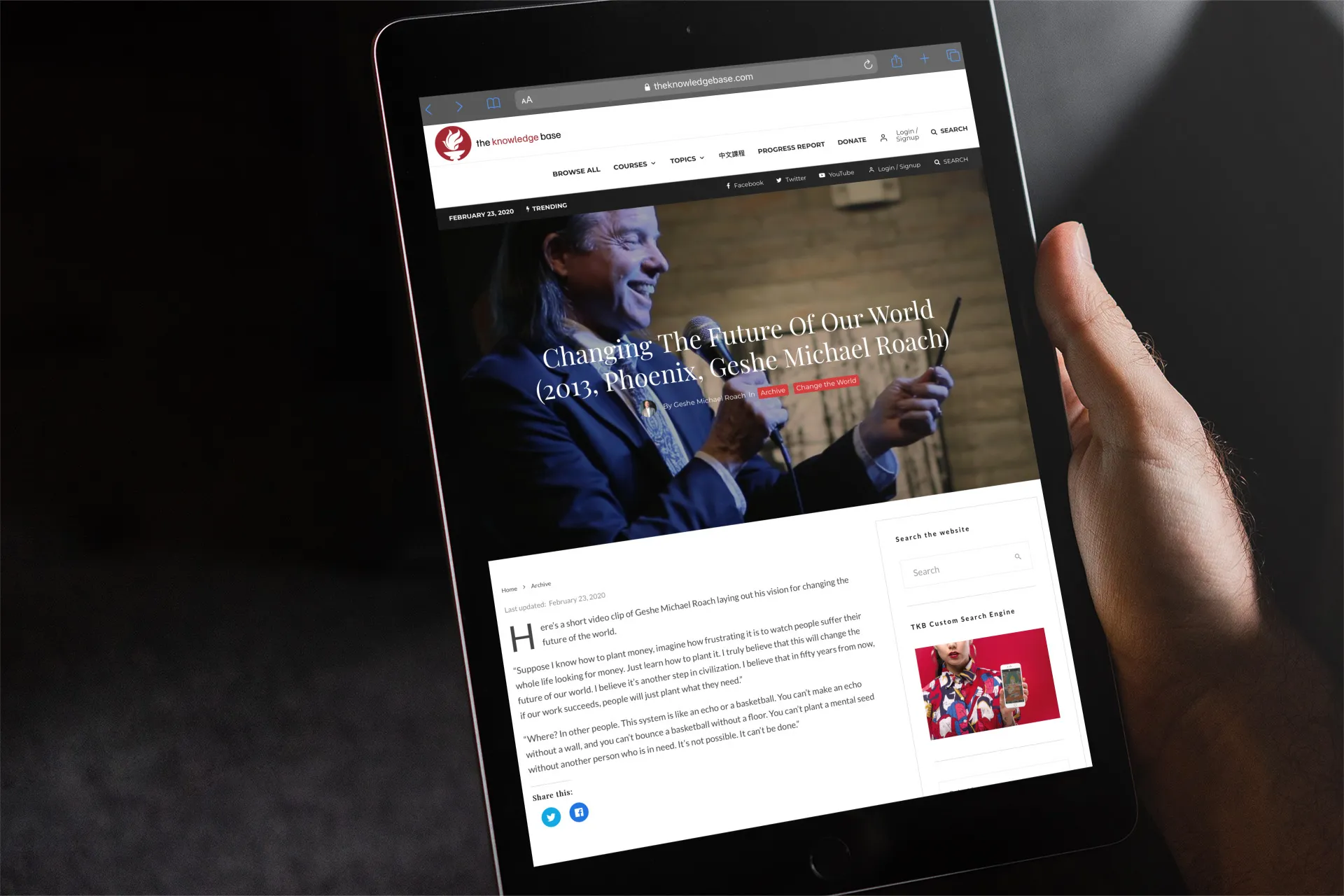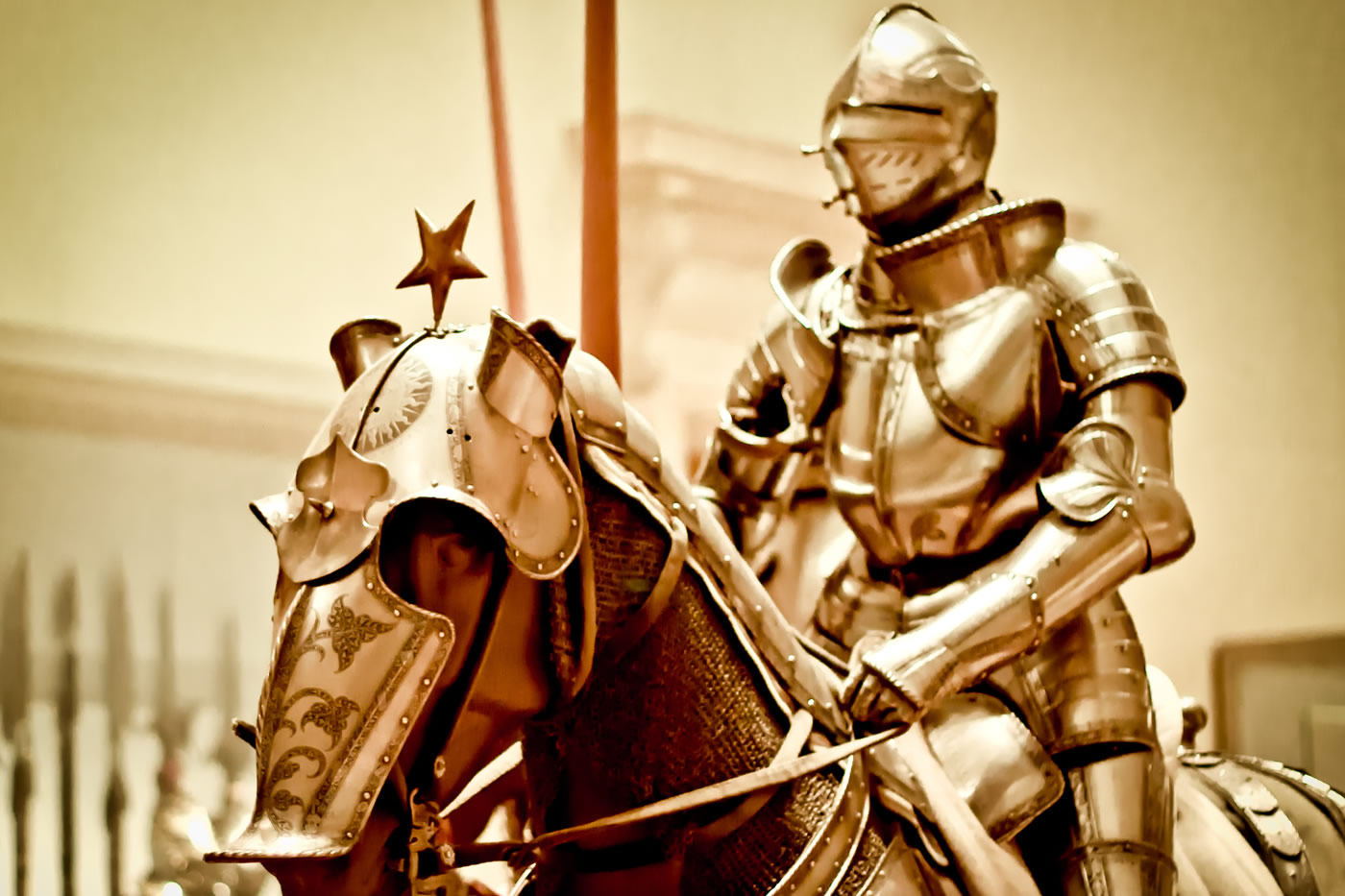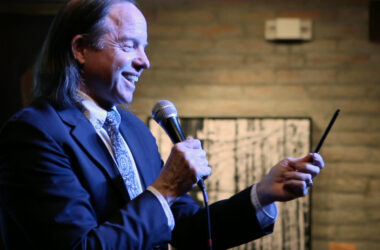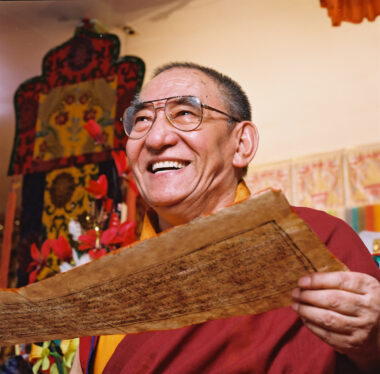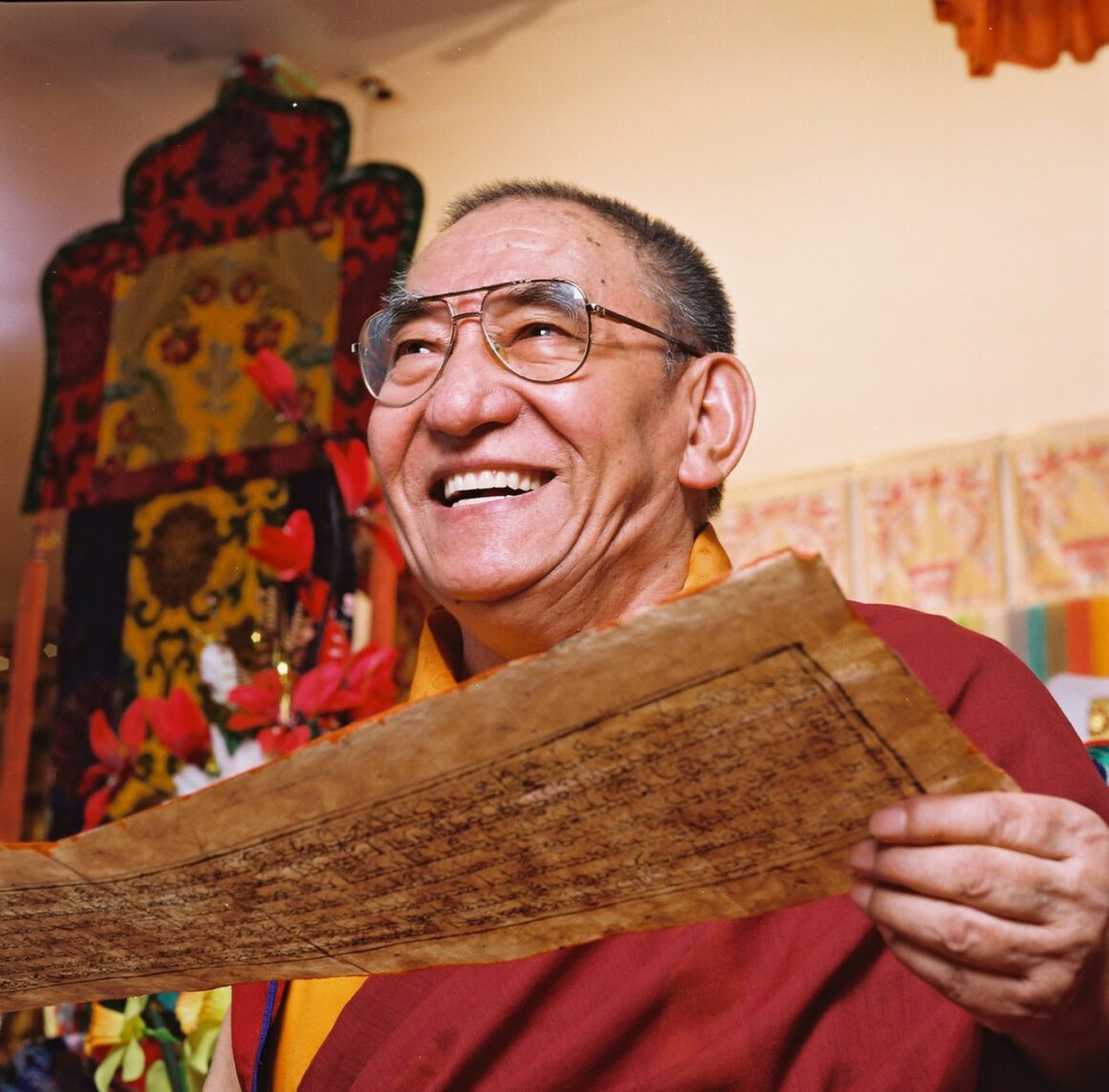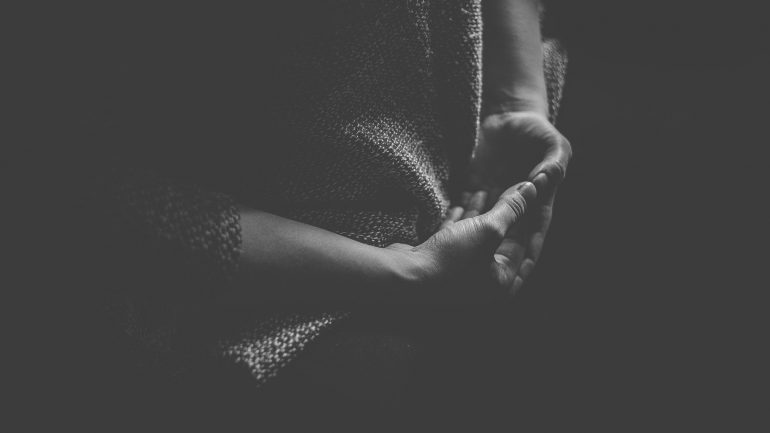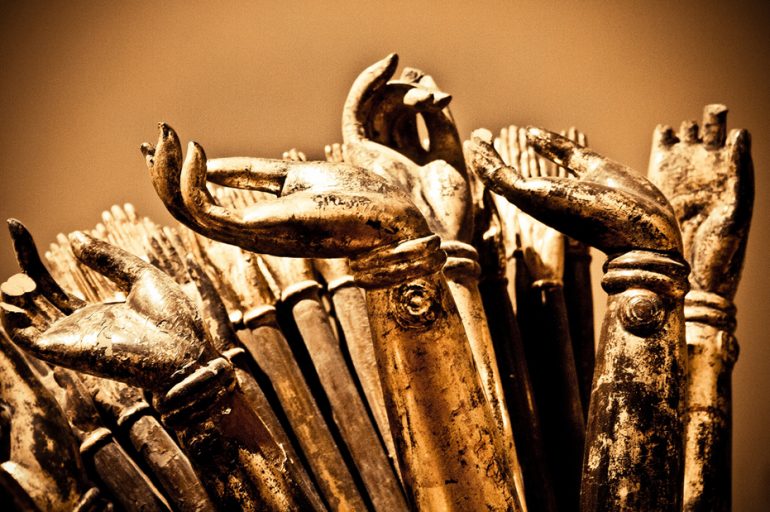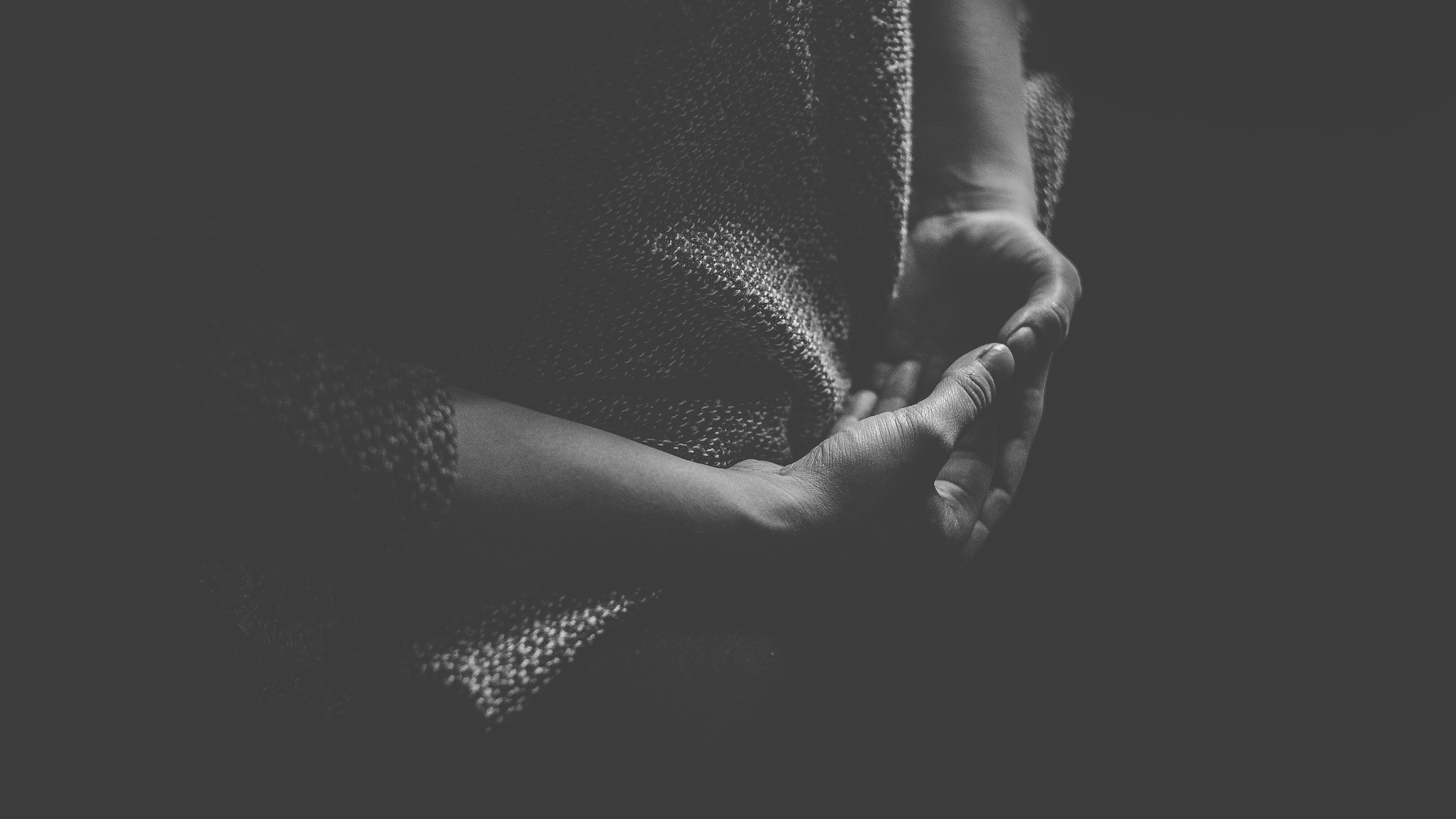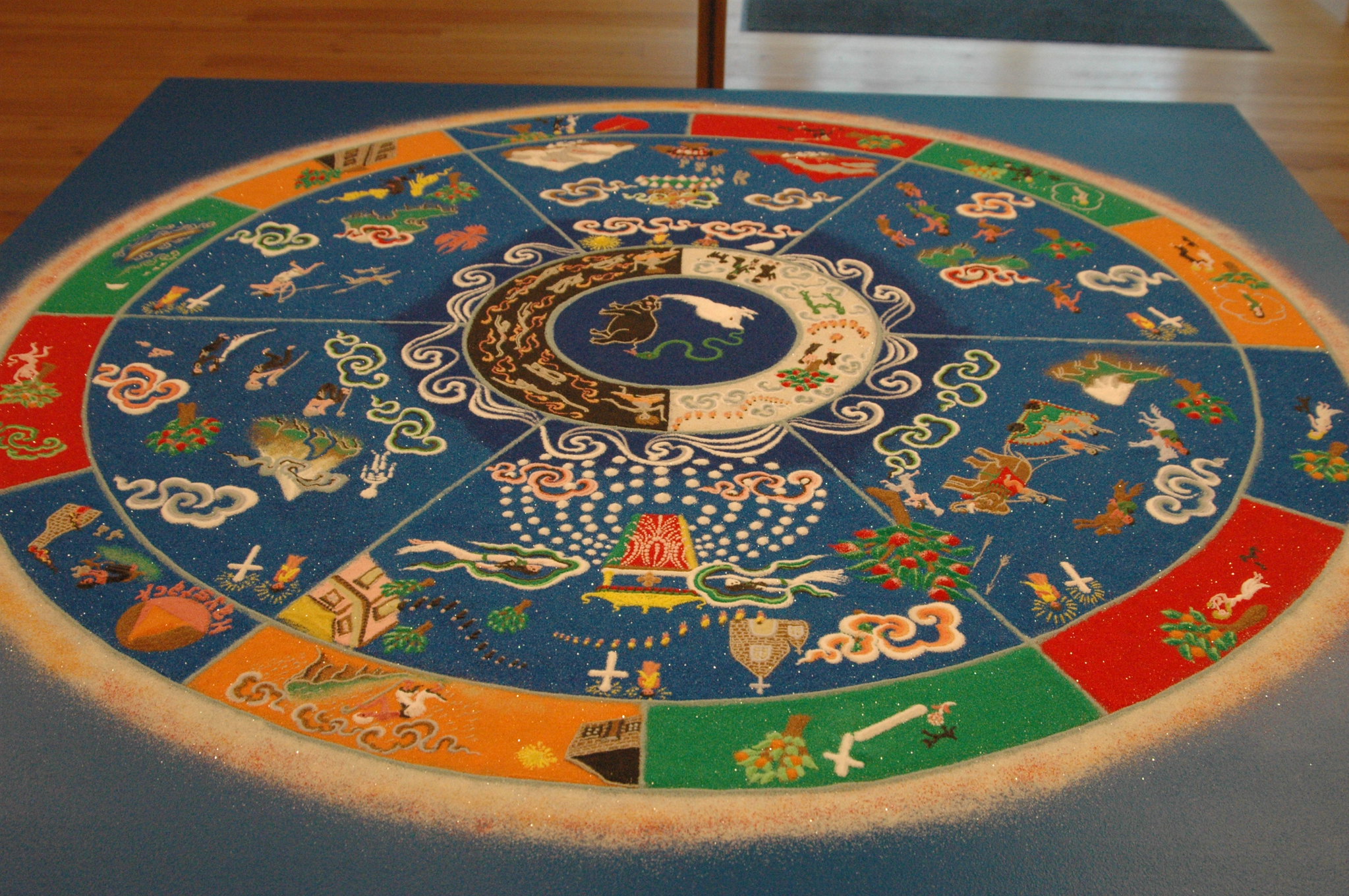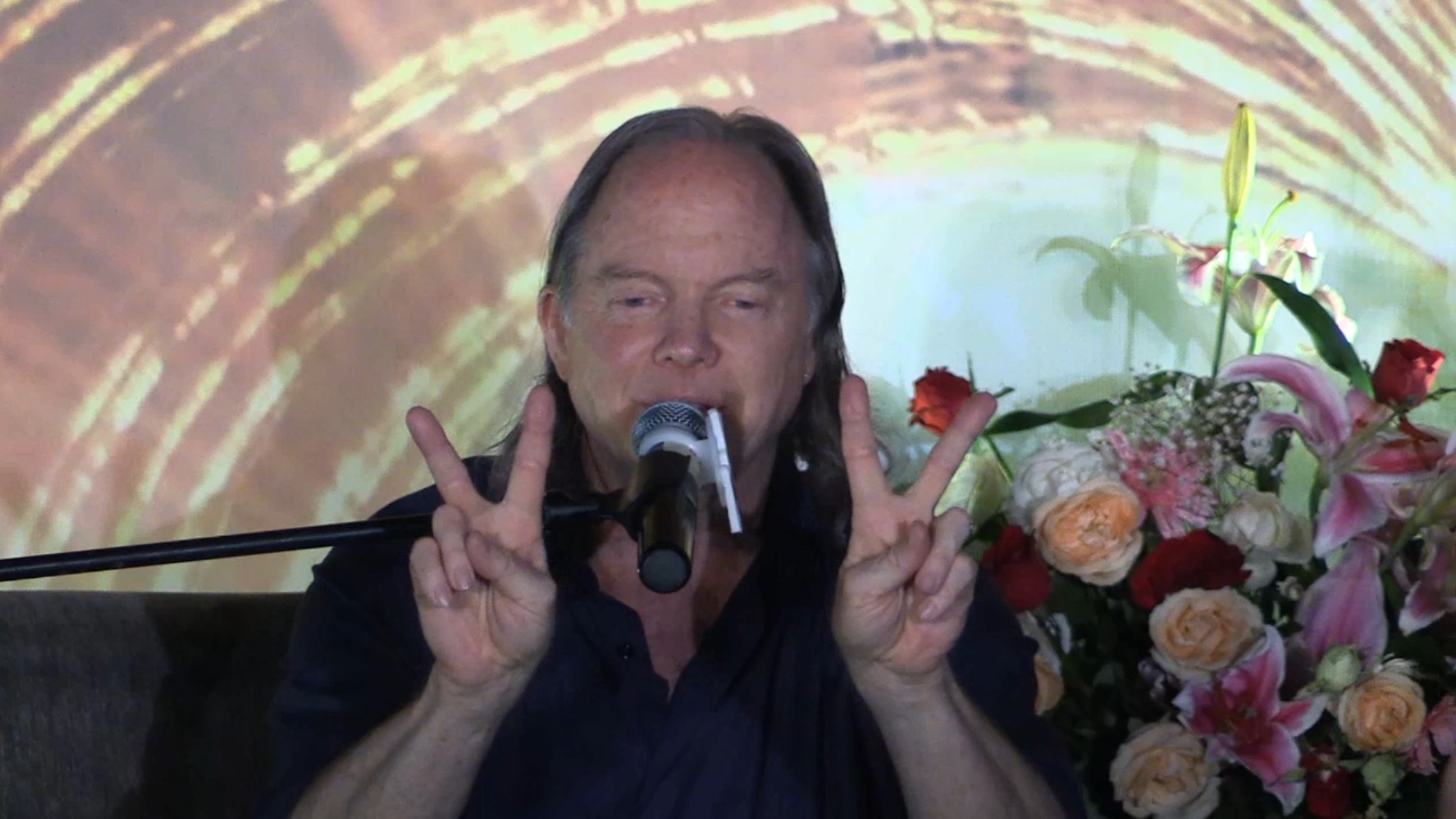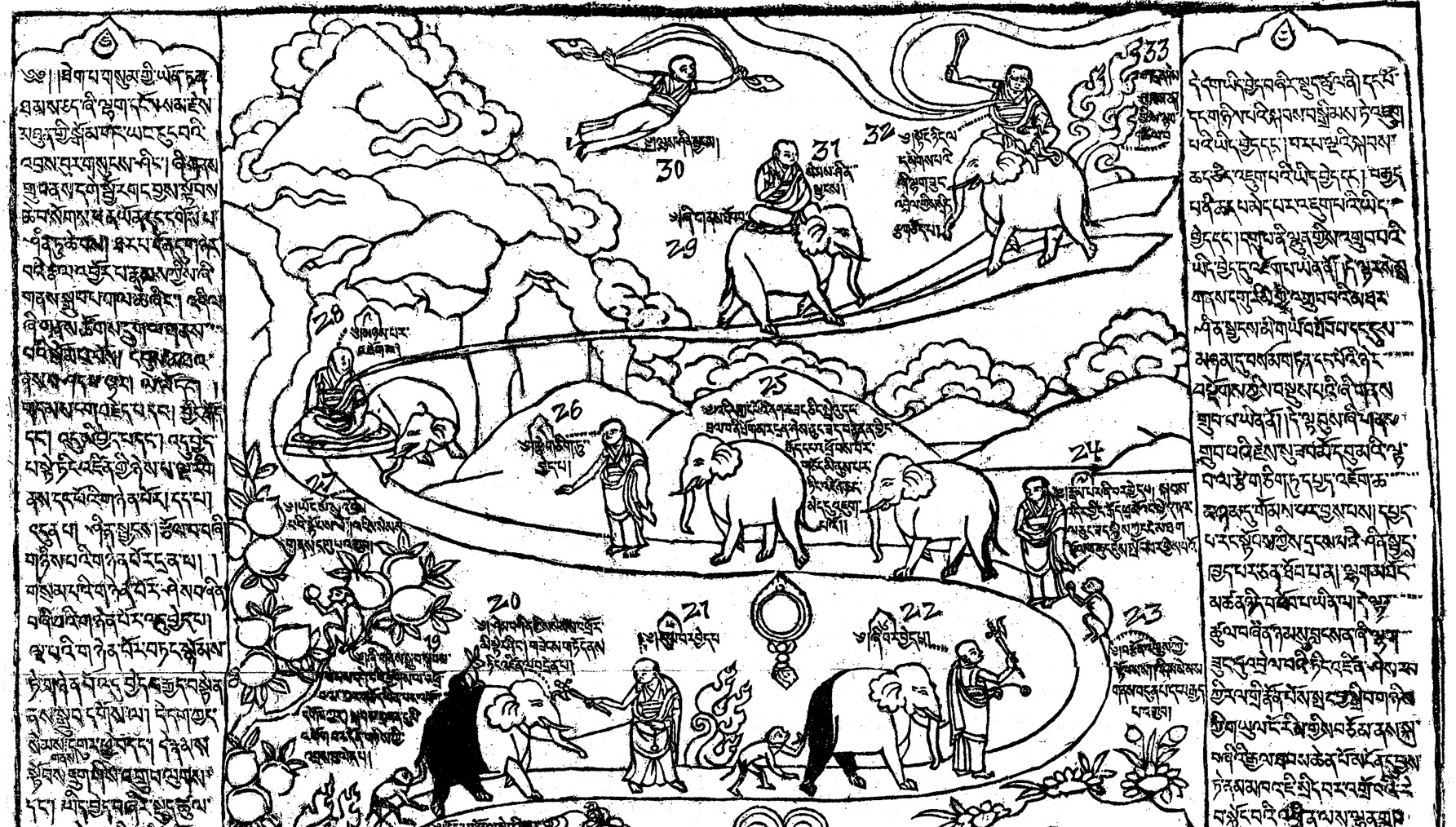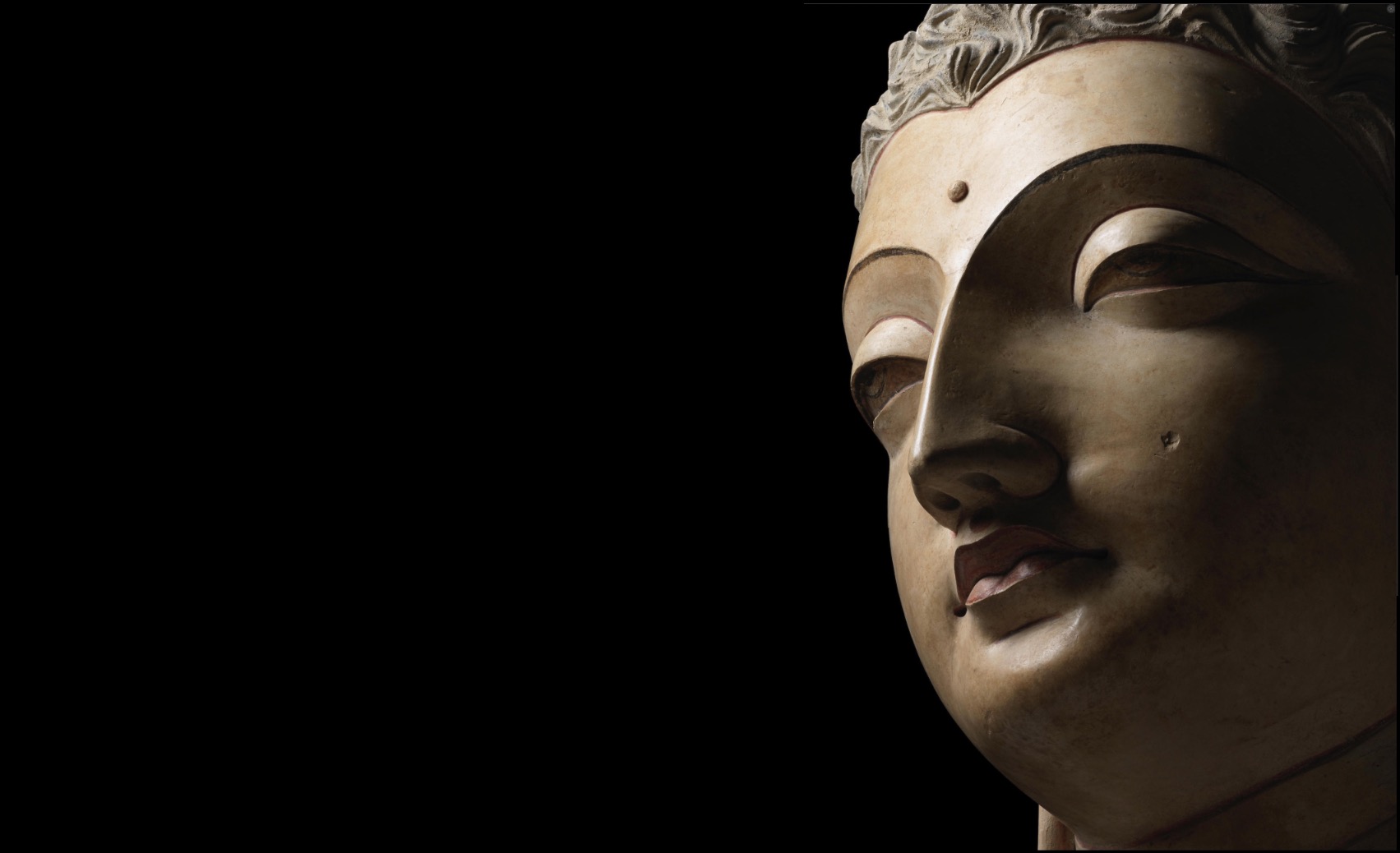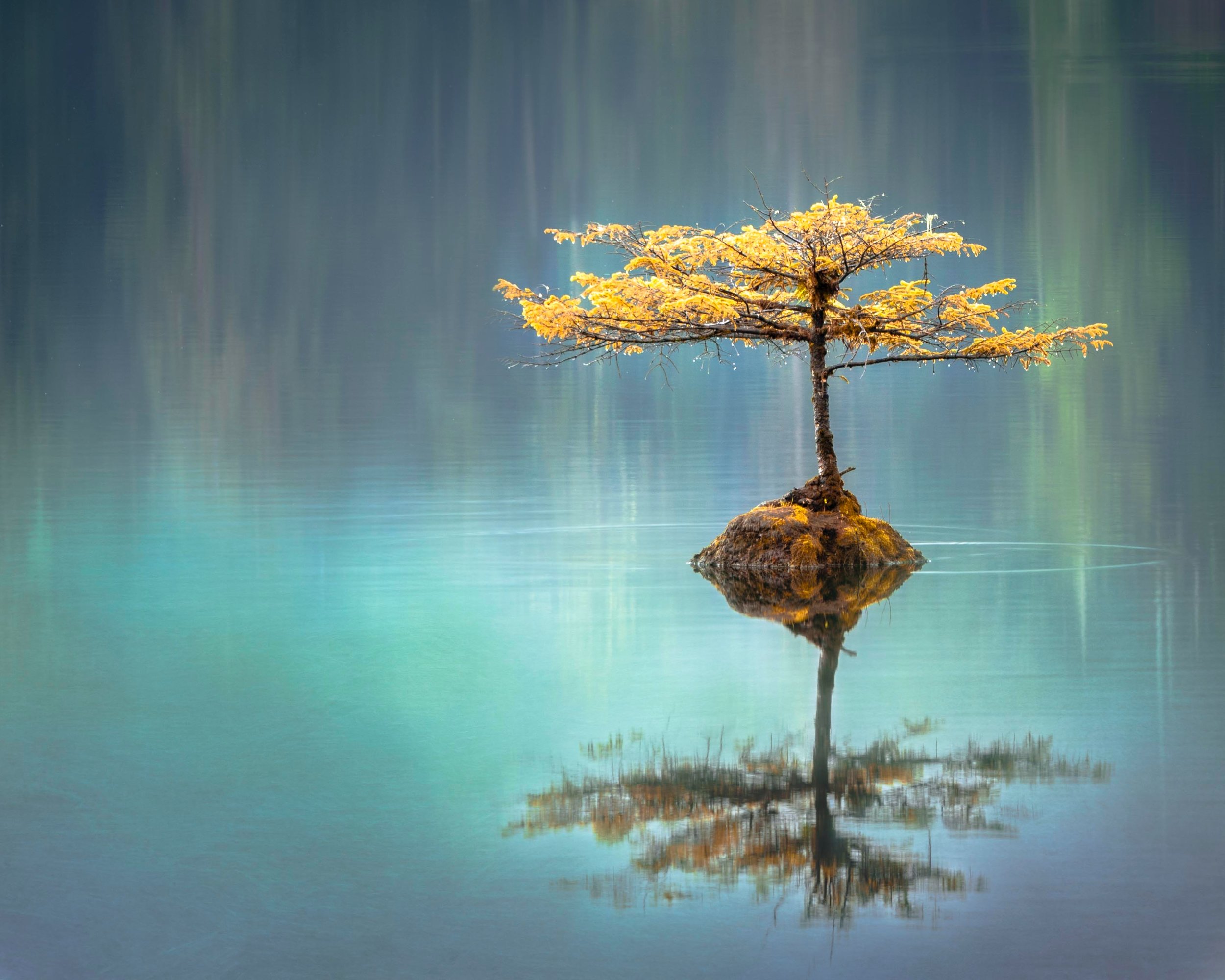Many of you have been following the Gift of Liberation Lam Rim teachings that Geshe Michael has been doing since 2010. While working on those teachings this got me thinking about another extraordinary teaching that Geshe Michael gave on the Lam Rim back in 2005. This is a series of classes called Living Lam Rim which followed the passing of his Lama, Seramey Khensur Geshe Lobsang Tharchin, in December 2004.
After spending many years at His teacher’s side, Geshe Michael teaches us the Steps of the Path to Enlightenment using beautiful examples and stories of how his own teacher’s life reflected these Lam Rim teachings. Below you’ll find audio at the beginning of each section of the Lam Rim.
It’s a work in progress as you can see, but keep checking back for updates.
One of the best ways to learn lam rim is simply to observe the behavior of a great lama who’s been taught the lam rim and who is a master of it… So we were going through the steps of the lam rim, and I thought it was good if we talked about how Khen Rinpoche lived those teachings. Its good to learn Lam Rim from a book and its also good to be with a lama who is doing lam rim. If you live with a master, you learn it by osmosis, which is really the best way to learn things. So just by being around a lama you learn the Lam Rim by how they act. So, I am going to go through things that I remember about Khen Rinpoche’s practice of the lam rim. While we lived together for twenty years, I had a chance to watch him and see how he was practicing lam rim.
One of the best ways to learn lam rim is simply to observe the behavior of a great Lama who has been taught the lam rim, and is a master of it
So now Rinpoche has passed on, and I don’t really feel so bad. I’ve seen him in many forms for many years, and so I don’t grieve. You know, I miss him but I don’t grieve. So I don’t have a problem—he’s with me all the time, literally. But I feel very bad especially for the people who depend upon that emanation. You know we lived together for twenty years, and so I learned the lam rim from him directly. He taught Liberation in the Palm of Your Hand two or three times through. It took twenty or more years to finish. He taught it I think twice in Howell, and he taught it once in Washington.
And at that time I was his driver. I was his cook. I was his financier. We built his house. And I watched the baseball games with him. And so I had a unique opportunity to hear everything he taught for twenty years and I thought you might like to hear the inside scoop of how he was practicing the Lam Rim. So I thought every time we meet now I’ll give you some stories. And they’re mostly funny because he was like that.
How we rely upon a Lama, which is the very root of the path
1. Relying upon our Lama in our thoughts
So the first Lam Rim is how to honor your lama in your thoughts—how to think about your lama, and how to act towards your lama. How to behave towards your lama. So how did Rinpoche practice this particular step?
I knew him for thirty years, and before that he was living in India for twelve years. And in that 42 years, he never went anywhere without his lama telling him to go. I don’t know about before that, but wherever he went it was because one of his teachers had instructed him to go.
He came out of Tibet, when the HHDL did, in 1959. And when he got to India, most of the monks went to Buxa, which is a British prison that was built for Gandhi and other revolutionaries. It was abandoned for a long time, and in the worst part of the Bengal jungle, miles from anything. The Indian government put most of the monks from the three great [Gelug] monasteries there along with lots of other monks. Many of those monks got very ill with tuberculosis.
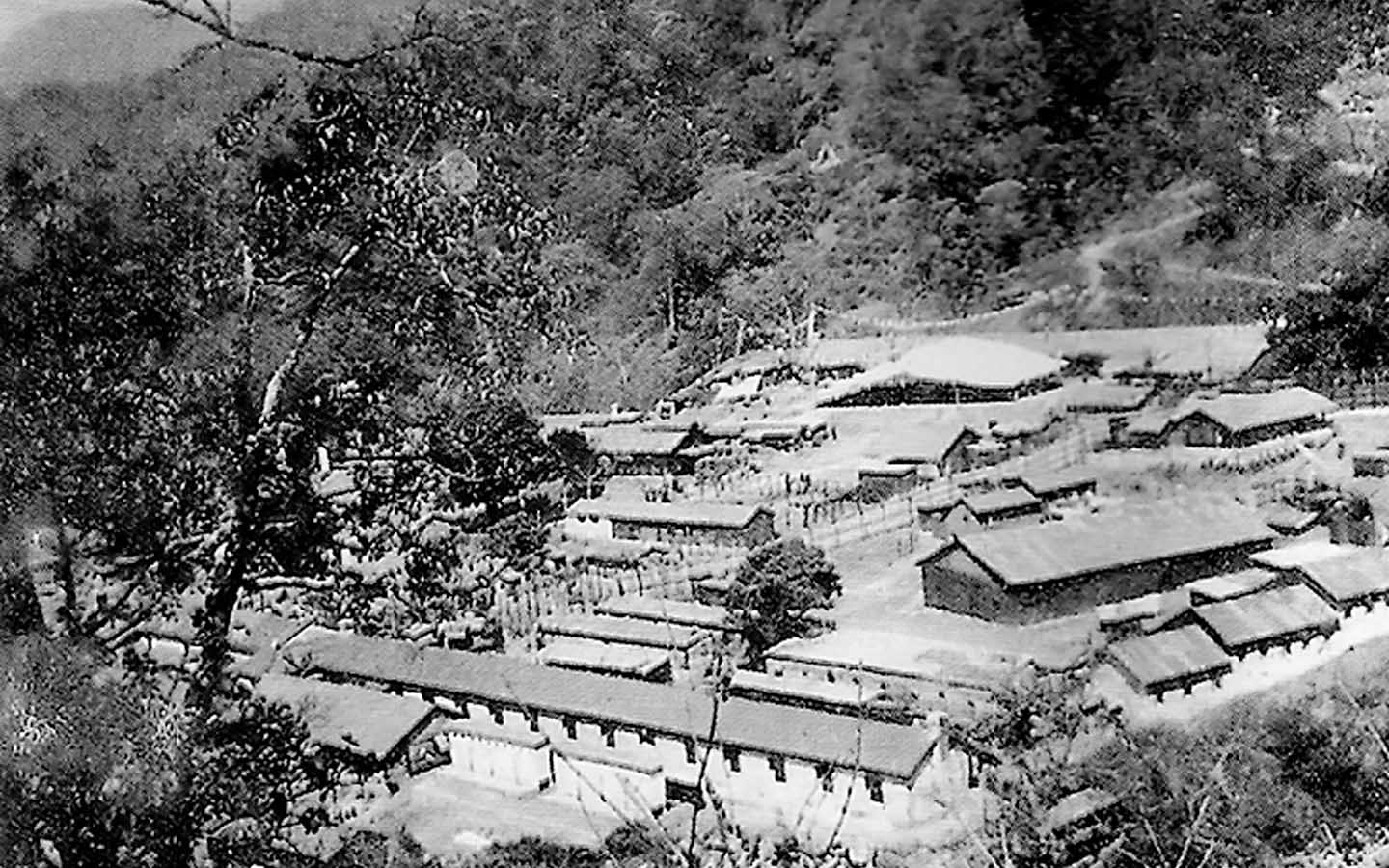
A few monks were chosen by His Holiness to come to Mussoori or Dharamsala, which is where he was stationed. So, he asked Rinpoche to come with him; and Rinpoche never went to the refugee camp. His Holiness asked Rinpoche to take care of the education of the young Tibetan refugees, many of whom were orphans—whose parents had died.
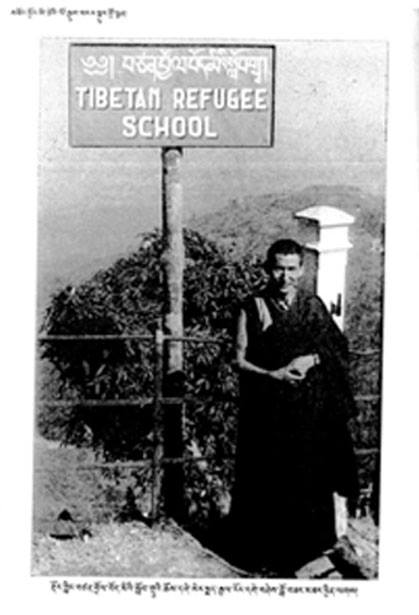
For twelve years, he and Gelek Rinpoche wrote the textbooks for the elementary and high schools of the Tibetan refugees. They were beautiful and we studied those books a lot. Then HHDL called him and said there are these Mongolian people in New Jersey, in the United States, and they need a priest there. There was a project there to translate the Abhidharmakosha autocommentary by Master Vasabhandu. His Holiness asked Rinpoche if he could go, and Rinpoche just always obeyed his Holiness.
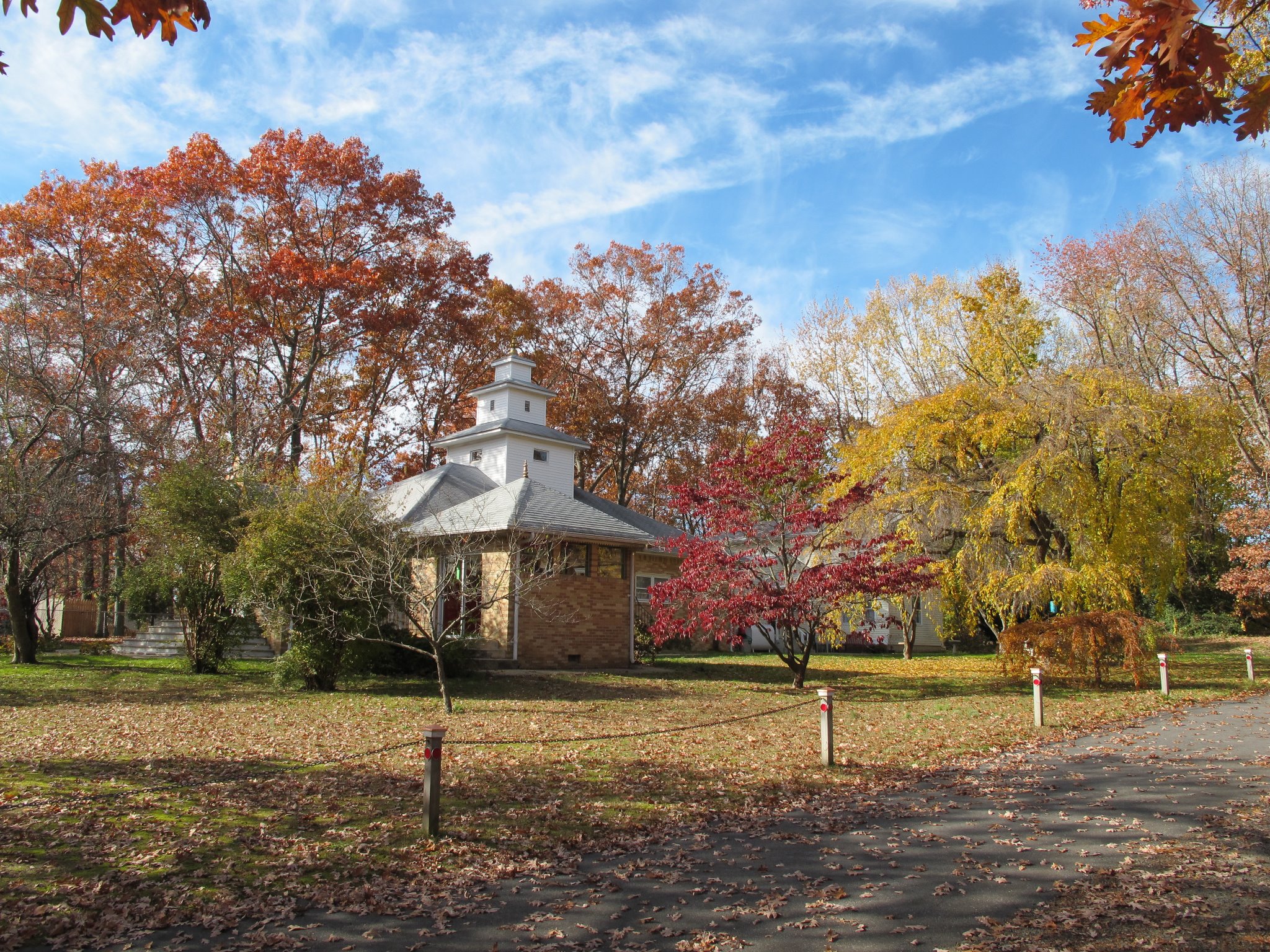
Rinpoche’s root lama was Kyabje Trijang Rinpoche, who was the tutor of HHDL, but he also considered HHDL to be one of his main teachers. Pabongka Rinpoche was also one of his early teachers. Pabongka Rinpoche passed when Rinpoche was twenty, but he received teachings from Pabongka Rinpoche on the lam rim, like what you see in Liberation in the Palm of Your Hand. Rinpoche received those teachings, not at that particular time which was earlier, but it was repeated later and he received those teachings from Pabonghka Rinpoche.
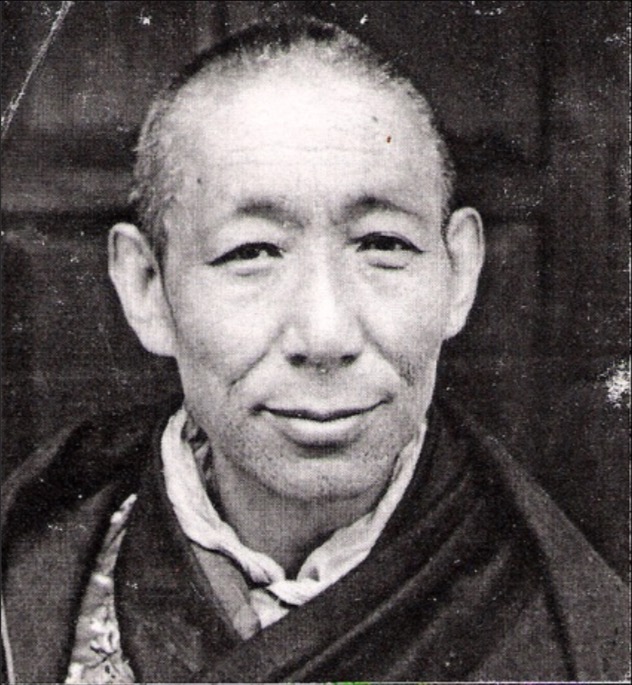
There was a famous incident when he was about 10 or 20 years old. At that time, Khen Rinpoche was one of the nyerpas of Sera Mey, which is like a quartermaster. It was his job to set up Pabongka Rinpoche’s room, take care of all his food, and to make sure the cooks came. Then Pabongka Rinpoche called him and touched him on the head and said, “This one will be special.”
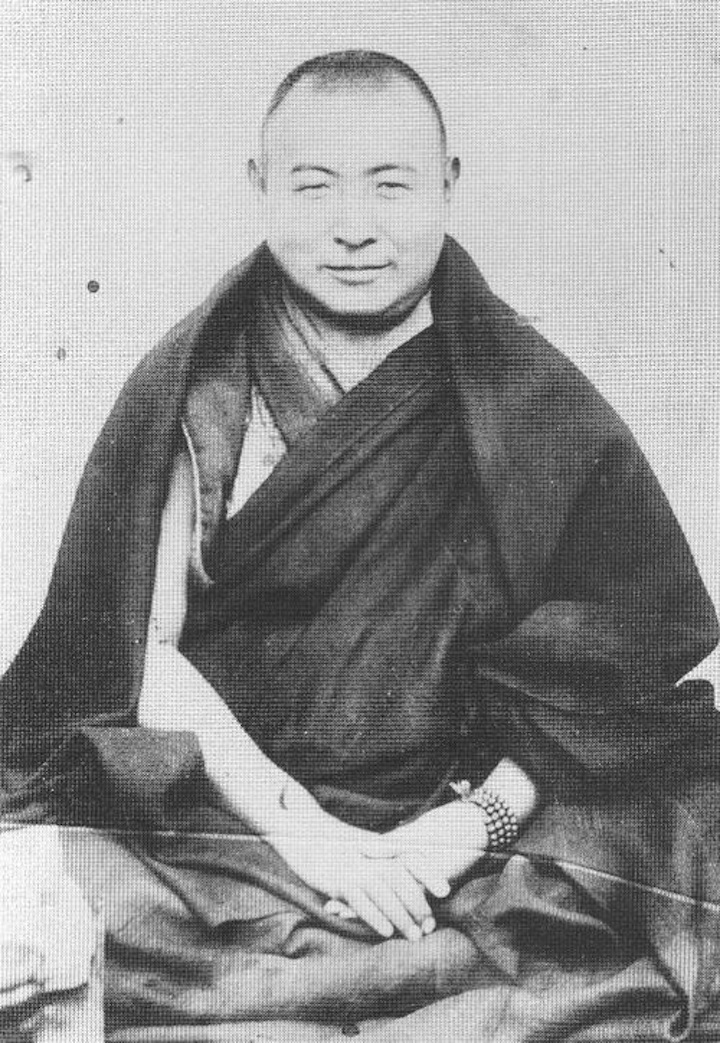
He then came to the United States. Later we lived in fear every time a letter came from HHDL. We had discussions, “should we hide them, should we throw them out”? Those letters came every four or five years, and if he said, “come,” Khen Rinpoche would have to leave.
And so every four or five years he would get a letter from tak chen choeling. There was the official stamp on the outside and we were all afraid, and we would open it together, but usually it would be some request to help with something else.
I can remember one of the letters—you see, people around HHDL write letters in his name to all these lamas asking if they would support one of their projects, and if it had HHDL’s stamp on it, Rinpoche considered that he had to do it. I remember once they needed money for teacher training in Dharamsala for the Tibetan schools.
They were trying to raise $10,000, and Rinpoche cleaned out his bank account in one day. He sent all the money for the whole project, and he would keep doing that all the time. If His Holiness wanted something or needed something, he would do it.
One time we couldn’t get a visa for His Holiness to come to the United States because he was considered untouchable by the American government. We had a throne for him in Howell and we were all ready for him, and he was refused a visa over and over again.
Then suddenly it came through, and Rinpoche cleaned out his bank account again, and so did all the people in Washington D.C. They rented a big meeting hall there for $20,000 (in 1979 money), and we brought him there. That was his first talk in the United States.
I remember when His Holiness came to the airport. There were about six of us, and Khen Rinpoche saw him as a deity. Then when the meeting actually occurred, they put Rinpoche in the back, and all the politicians took credit. It was really funny, but he didn’t care. It was very beautiful.
When they choose a new abbot at Sera Mey, the monks propose a list of maybe ten people, and then that goes to HHDL, and then he will choose the next abbot. So it’s sort of a democracy, from the list. Every time it came up, Rinpoche would send this long letter to the monastery, “Don’t put me on the list”. He didn’t want to be an abbot, he didn’t want to be a big shot. So for twenty years, he kept writing these letters, “Don’t put me on the list.”
Then finally he got to be 70 years old, and he was very ill with diabetes and his legs were bad—he couldn’t walk much. So he said, “Well I guess by now they all realize I shouldn’t be on the list.” So he didn’t write the letter.
Then we get this letter from HHDL and it said, “You’ve been selected abbot of Sera Mey”. So he said, “I can’t do this”. And we all said, “No, you can’t go.” So art and I and a bunch of people had a meeting about it. His Holiness was going to be in Washington New Jersey at Geshe Wangyal’s old place, and Rinpoche got permission to go meet him. And he was allowed to take along one attendant so I went too. And then Art and all of us made a plan that I should go up to HHDL and say “Could Rinpoche do a short term? Like a year or two years or three years or something?” Otherwise, it’s six years or sometimes for twelve years. We had this plan ready, so we went out there.
And we were ushered into this nice room. I was sitting nearby and Rinpoche was next to His Holiness. And HHDL said “Well are you going to try to get out of it or not? Is that why you came?” Because everyone tries to get out of it, nobody wants to do it. It’s a thankless job and it’s hard.
So Rinpoche said, “I’m seventy years old, and I can hardly walk. I’ve got bad diabetes. But I’ll do whatever you want me to do.” And His Holiness said, “You’re the only one. Of all the people who went overseas, you’re the only one who always does what I ask you to do.”
He used to call him “old man Tharchin”. I met him later in Washington D.C. and he said, “you’re old man Tharchin’s student”.
So he said, “then please be the Abbot.” Then he looked at me and he said, “and you should only be Abbot for a year ok? I just want to get your name in the lineage of the abbots. A year is fine and after that come back, your students need you.”
That was a weird moment, and I can think of another. He was very devoted to Trijang Rinpoche; whenever Trijang Rinpoche’s name came up in a book he started crying. The first two times I thought he was faking it or something because he would just suddenly start crying. He would never do that normally. But then after twenty years of that, you think, “well, maybe it’s real”. He would just stop his teaching and start crying.
He always carried around this little scrap of paper, about this big. He had asked Trijang Rinpoche about the heart chakra, “how does the heart chakra look?” And he drew a drawing for him. Trijang Rinpoche was a great artist, and Rinpoche carried that around all the time. Sometimes, he’d pull it out and let me hold it for a while, and then say, “give it back.”
One time we sent Art with Khen Rinpoche when he went to see Trijang Rinpoche. Art was going to ask Trijang Rinpoche for a long-life prayer for Khen Rinpoche. So, he wrote the long-life prayer that’s in the dakye, and also the verse for the long life. The lineage verse was written by his teacher, and if you read it, it’s pretty extraordinary that someone’s teacher would confirm them as a high lama. That is very rare. And it was very beautiful. We got that without asking Rinpoche. We got someone to go in.
One time I put a diamond on the altar. I hid it behind a picture. And Khen Rinpoche came to me a few hours later and said, “did you put that diamond on the altar?” I said, “yeah yeah, I sold our car and I put the diamond on the altar”. And he said, “I’ll give it to Trijang Rinpoche ok?” And I said, “yeah.” And after that, he flew to India and gave it to Trijang Rinpoche.
I tried to ask him about his early Lamas, and he wouldn’t tell us much. So when I was driving him to Washington D.C., I would ask him my questions. If you tried to stick a tape recorder in his face, he would never talk about his early life. But if you just kind of brought it up driving the car, he would talk. And then when I got to where we were going I would write it all down.
So one of those early Lamas, I don’t remember his name. Before that, Rinpoche was a bad student in the monastery. He was a troublemaker, and always getting disciplined. He was not a good scholar, but around the age of seventeen, he met Pabongkha Rinpoche and then Pabongkha Rinpoche touched him. And after that, he came home and he told his Lama, “I’m going to start studying for real now”. And his lama said, “Yeah, right!” Then Khen Rinpoche said, “I’m going to become a Hlarampa Geshe.” And he told me that his teacher said, “The day you become a Hlarampa Geshe is the day I become the Ganden Tringpa (which is the head of all Gelugpas)”. Rinpoche did become a Hlarampa Geshe.
The next year I think his lama got an appointment in a monastery down south in Tibet. It wasn’t a major place of study; it was like one of those small monasteries, but it meant a lot of income to be the abbot. If you got that position it was considered as a bonus, because then you would have a big income and a big name. So his Lama was appointed as the abbot, and Rinpoche was expected to go with him as his attendant.
When the time came to go, he went to his lama and said, “I can’t go.” And the lama said, “why?” And he said, “I’ll get behind in my studies”. You have to be in the debate ground every night if you really want to learn. So, he refused his lama; and the lama left and Rinpoche stayed in the monastery. I always thought there was some kind of message there also. You see he always did what his lamas asked for the forty-two years that I knew him, but he refused the first lama.
Those are my lama stories, ok? I think he had perfect lam rim. I think he had perfect behavior towards his lamas.
2. Relying upon our Lama in our actions
I never met Kyabje Trijang Rinpoche. I lived next door to him for six months in Dharamsala when I was first there, and I never went next door because I didn’t want to bother him. Students from the library would go meet him, like once or twice a week and I would say, “He’s too big,” like I’m not worthy to take his time. Rinpoche once asked me, “Did you meet Kyabje Trijang Rinpoche?” And I said, “No, I didn’t want to bother him.” And he said, “That was really stupid!”
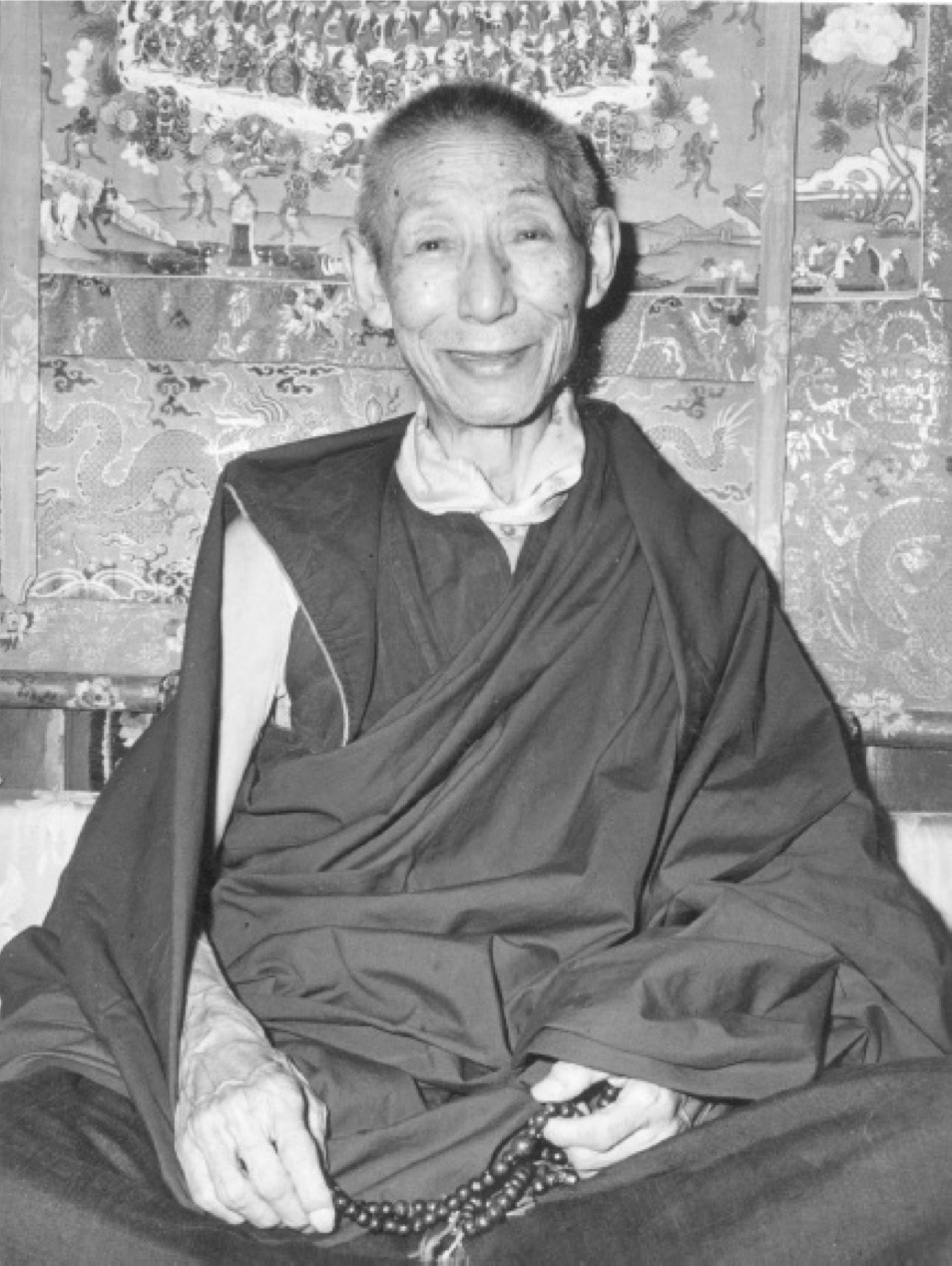
Anyway, just before Kyabje Trijang Rinpoche passed, Khen Rinpoche and Art met him in India. There was a nice relationship because Rinpoche told me he did his prostrations and then the first thing Kyabje Trijang Rinpoche said was, “You’re getting a little thin up top aren’t you?” Then during the course of the conversation Kyabje Trijang Rinpoche said, “Well now you’re in America, right?” And Rinpoche said, “Yes.” And so he said, “Well, you know there’s this book which people call Liberation in the Palm of Your Hands.
It’s really better to translate it as A Gift Of Liberation Thrust Into The Palm of Your Hands, and I prefer that. The Tibetan means “jammed into your hands”–“There it is, take it!” The title says the lama is coming and just jamming this gift into your hand, so take it.
That book was a record of teachings by Pabongka Rinpoche, over a period of 25 days or so. It’s a very famous lam rim, and Khen Rinpoche taught it all the way through many times. Trijang Rinpoche was at that teaching and he took notes and wrote it down as that lam rim. It took him 15 or 20 years, and he did it perfectly. If you can read Tibetan, that book is absolutely exquisite Tibetan. He worked, and worked, and worked on it, so it’s really a transcript.
I think it’s maybe the best book ever written. It’s just perfect—in meaning its perfectly accurate. Everything is beautiful; and the Tibetan is like the best Tibetan ever. Everything is exquisite. So that was like a labor of love by Kyabje Trijang Rinpoche. He also wrote books himself, but the most famous thing he ever did was to execute the lam rim of his teacher.
So, Trijang Rinpoche was talking to Khen Rinpoche about his life in America, and he said,”they talk English there, and I want you to translate Liberation in the Palm of Your Hands for them.”
And Rinpoche said, “Yes, of course. Whatever you tell me.” Rinpoche’s English was really rudimentary at that point, so he came back and we were talking and he said, “I’ve got to learn English really well, we have to translate this book.”
When I first met him [Khen Rinpoche], my first job was to drive him down to Washington DC. Someone had paid for him to take an English course at Georgetown University, so we went down there. He stayed in the Sri Lankhan monastery there, but they didn’t have room for me there so I stayed across the street in a Zen monastery. Then every day we went. I drove him to Georgetown so he could take English lessons. That is what he had to do in order to translate, and in order to teach.
He had never been to a dentist, that was 1975 and he was 54 already. He’d never seen a dentist before; and so he had to have 17 teeth pulled out. We had a really good dentist in the Georgetown area. The other dentists wanted to pull out all of his teeth, and this dentist said, “No, this man is a preacher, so we’ll save as many as we can save and then we’ll rebuild his teeth”. So they did—it took months, and it was really painful. He would have teeth taken out, and then the same day he would teach.
Every Saturday he would teach in the monastery there. Bob Taylor was there, and people like Peg Brenner were already there.
In the morning we would take him to the class at Georgetown, and he would jump out of the car and run to class. All the other students were in their 20’s, and he was nearly 60 years old; and he says, “I have to learn English”. “Trijang Rinpoche told me, my lama told me, so I have to do it.” Who can learn a foreign language when they’re 60? Plus, English is a difficult language; but he went to school and he was determined to learn. Then he came home the first night and he said, “I’ve got this stuff. It’s called homework”. And he just handed me all the homework, “You do it!”
And I said to Rinpoche, “The point is that you have to do it.” And he just looked at me and said, “I’m your teacher!” In those days he was very very fresh out of Tibet, and he hadn’t been Americanized yet. So he was wrathful a lot, and he said, “Are you kidding? You’re going to refuse your lama? I told you do my homework. Do it!”
It was very much like that for the first ten years or so. He’d say, “I’m your lama. What are you thinking? I asked you to do something. Why are you talking back to me?” It was just unthinkable to him, and he just shoved it in my hand.
Slowly he started doing homework, and then he really worked hard on his English; more than anyone knows. He would study after every class in Howell, and he would teach sometimes two or three classes a day, and nobody would come. And so it bugs me; when a lama gets old or when a lama passes, and everyone rushes there and prays for them to please come back. But then when he’s there, nobody comes to class or nobody works on the stuff.
That went on for twenty years. Five people, three people, two people, one person. So, I don’t go much in for the big ceremonies, when they get old, or when they pass. I’m not into that. When they’re there, when they’re strong, vital, teaching you the lam rim, then you should come to class. When they get old and when they pass, already things are set, you don’t have to worry. Nobody has to worry. They don’t have to worry. You don’t have to worry.
So anyway, after class I would go into his room and I’d have a whole list of what he said wrong. Like he’d say, “This book wrote Je Tsongkhapa”, and that went on for years. Subjects and objects. And then like HHDL, he would claim that his English was really bad, but then sometimes he would take off onto like two-hour exquisite, flowery, perfect English.
Then you would get this weird feeling that he was just fooling you, and that he wanted you to listen carefully to what he was saying. And I would think that he wanted us to have the virtue of working on his books, but he could have just as well written them in much better English than we could. And I’m sure His Holiness’s translators have the same experience.
He really worked hard on Liberation in the Palm of Your Hands. At one point, I remember we heard that the same book was being translated by Wisdom publications in London. At that time I was going to London for business at that time. So I said, “I’ll go see if this translation is any good, and how far along they are”. I went there and I met Nick Ribush, who was in charge of Wisdom at the time. And he said, “Here it is. It’s just about done.”
I looked it through, and it was ok. It wasn’t the level that Art or Khen Rinpoche would do, but it was ok. So I came back and I said, “Rinpoche, you know they’re almost done and given that there’s 200,000 books to translate, maybe we should work on a different one”.
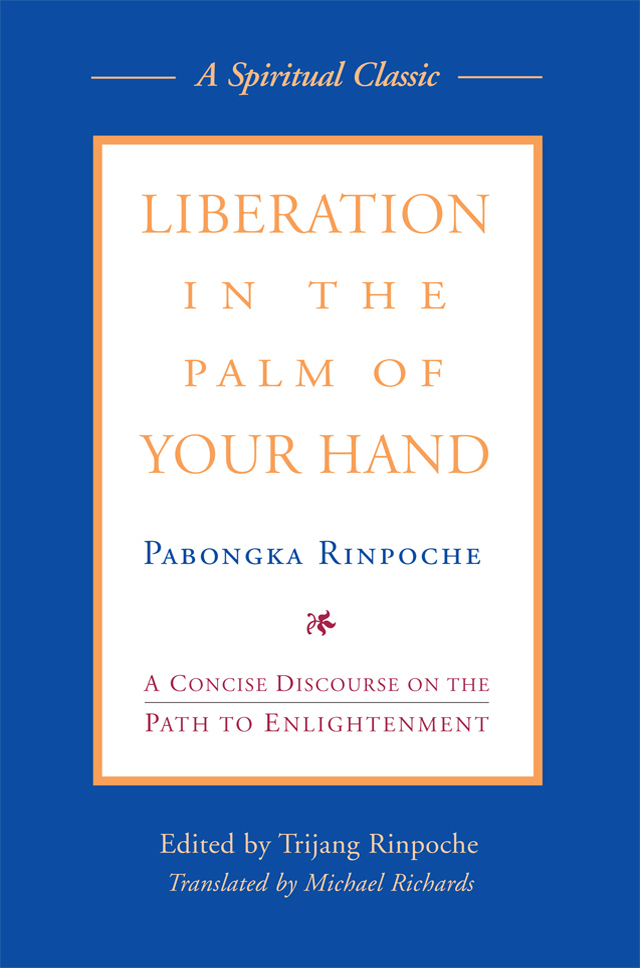
And he just looked at me like, “Are you crazy? Trijang Rinpoche told me to do this. It doesn’t matter what else happens!” So, he worked on that for twenty years, to fulfill his Lama’s wishes. And twenty years after he was asked to do it, he finished it. But he didn’t stop, he practiced delnjor—working with what you have, leveraging what you have: your intelligence, your physical health, and your finances—leveraging it into dharma work. People say nying po len ba is “taking the essence”, but really it’s take advantage of what you have—no matter what you got. Maybe you are not gifted or endowed so much when you are born, but you get the most out of it, with whatever you are endowed with. That’s nying po len pa.
Rinpoche was so good at that. He didn’t know a word of English when he got to America, and he was getting on sixty. But his lama told him to translate the lam rim, so he did it. It took twenty years, and he just kept plugging away at it and finished it.
I think it was on the same trip in 1981; Khen Rinpoche met HHDL in his quarters in Dharamsala. His Holiness said, “You know, there are some monks from Sera Mey down in South India trying to start Sera Mey again”. Rinpoche said, “I heard something about that through my brother.” HHDL leans over and he says, “You are going down to help”. Rinpoche said, “Whatever you say. It wasn’t in my plans but I’ll go.” He cancelled his ticket and went down to South India.
At the time the monks were living in tents. It was a jungle with wild elephants. The elephants hurt some monks when they were trying to protect the first fields they planted. They just started pulling out trees and clearing the land by hand. I was there in those days. There were no wells; there was no fresh water. Just this muddy, dirty stuff, it was all brown, it looked almost like Coke. And that’s all that they had to drink and everyone was getting sick all the time. There were lice everywhere and everyone had these big, huge open sores from malnutrition and there were flies on them. Everybody was sick everybody had tuberculosis.
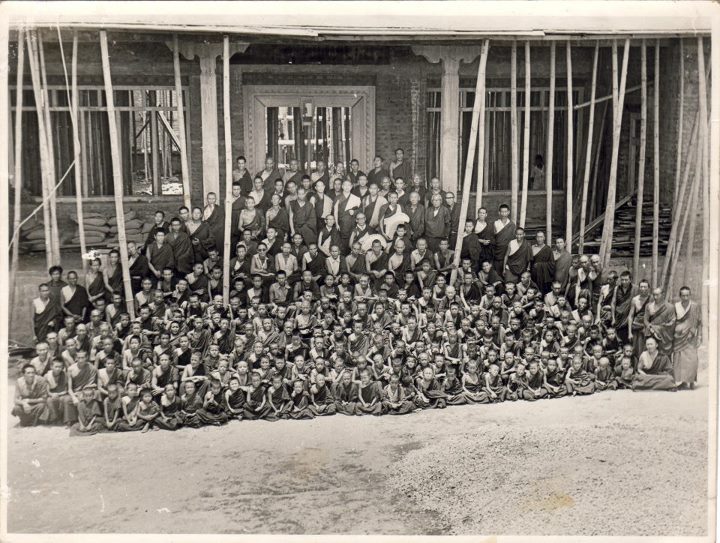
So, he went down there and looked around. A hundred guys survived out of, like, eight thousand. A hundred and eight guys made it to South India from Sera Mey and they started the monastery again. But Rinpoche said, “We have to do it!” We started; we sponsored five monks, their expenses. And you know the story. He spent twenty years with nothing, he came to America with nothing. He couldn’t speak a word of English, he didn’t have a dollar, and he would not charge for a class. So how is he going to help Sera Mey? He would not bother his students. When people gave him five dollars, he would set it aside, he’d put it on his altar and it would be there for like a week. Then he would put it aside for Sera Mey.
We’d go to the grocery store. He wouldn’t go unless he had coupons. I’m like, “Rinpoche, you’re going to save like three cents!” He said, “It’s for Sera Mey. We have to save the money.” He never spent money on himself, nothing! Nothing, never ever for himself. He would take the five dollars and he would buy some cruddy old bread from the old bread corner in the store. Then we would eat that, he would save the money, and he built up this money.
That fund, you know the story, it’s a success story—twenty-five years later it feeds about two thousand monks every day. He just did what his lama asked him to do. Even after the lama would pass, for twenty years he’s still there trying to do what his lama told him to do. It’s unbelievable. He paid for most of the buildings built at Sera Mey. They were once on the verge of bankruptcy—ready to close the monastery. The main temple had been mortgaged, and they had defaulted. Rinpoche organized—three people gave up all their money and every penny they had— and e un-mortgaged it. He kept doing stuff like that even up to the last year. When he went to Sera Mey in 2003, he presented them with a hundred, and something, thousand dollars that people had donated to keep the food fund going. He just struggled like that.
I remember one day someone gave him ten thousand dollars. He just took it, and he flew to Sera Mey. When we got to Sera Mey, we opened the door of the scholarship office, and said, “Any monk who has a medical need, just come”. And there’s this line of like five hundred guys. Anyone who had a receipt from a pharmacy or a doctor, would just get reimbursed. We spent the whole day from morning up to night. Khen Rinpoche sat down with each person, he reviewed their case, got all the receipts in—if you didn’t have a receipt you didn’t get any money—and then he reimbursed each monk for their medical expenses. He spent ten thousand dollars in one day, and then just flew back to the United States.
That determination with his language; to learn it to execute his lama’s wishes. Then twenty years of dogged determination to finish. His Holiness just said it off the top of his head, “Go down and help them”. It takes one minute to say that, and for twenty years he worked on it and made sure that they were taken care of. That’s his guru yoga. That was how he thought that you should behave toward your lama.
How to train our mind, once we have taken ourselves to a Lama
3. Urgent advice that we should try to get the very essence out of our spiritual opportunities and resources
So, here’s my reminiscence. I’m going through the Lam Rim steps that we’ve already covered. So, we’ve finished how to think about your lama. And I think the main one there is how Rinpoche acted towards his lama in those two jobs that we talked about. In a single sentence, HHDL gives Rinpoche a job to take care of Sera Mey, and then for twenty years … my boss at Andin used to call it the “Japanese soldier in the islands syndrome”. The Japanese overrun these islands in the south pacific at the beginning of the war, and then they put garrisons on these tiny islands; these are like a 100-foot-across islands. You tell these three guys, “you hold this island against anyone who shows up”. Then they leave, and 4 or 5 years later they lose the war and everybody goes home. These guys are still there with these rusty old guns until 1950, 1960, 1970, and no one has showed up yet; everybody forgot about them. And my boss used to say some people just do that. So anyway, Rinpoche did that.
His holiness in 1981 says, “take care of Sera Mey.” So, in 2004 he’s flying there with $100,000. Twenty-five years later he’s still doing it! And the same with Liberation in the Palm of your Hands. 25 years later, with his limited English, he’s trying to get it done and finish it. So, those are examples.
Now we’re on to the next step in the lam rim—oopportunity and resources. And I was really thinking about it. The key word here in Tibetan is nyingbo lemba. Do you know this word? Like the len in tong len, and nyingpo meaning heart. So, it’s like take the essence from something; it’s hard to translate into English. It suddenly dawned on me like yesterday or something, it means take advantage of an opportunity. Milk an opportunity.
Whatever opportunity you get—milk it, leverage it. Whatever resources you happen to get, you know what leverage means? Leverage means … like we’re leveraging Diamond Mountain. What does that mean? We own three quarters of it, so we put that up on the mortgage market to pay off the last quarter. You use what you have; you leverage it to get something else done. You take advantage of an opportunity. You get the most out of an opportunity. So how did Rinpoche do that?
I was thinking about his finances and his time, because those are the two big resources that many times we have. You can say it’s your body and your mind—that you have the six elements, but what it boils down to in your world, the two big resources are your time and your money. And how did he leverage those?
How did he make best use of what he had? That’s what delnjor is all about. That’s what spiritual resources and opportunities are all about. We don’t all have the same level of intelligence, we’re not all born with the same level of kindness; but how do we leverage what we got—the tools we’re born with. How do we make the most out of them?
If we’re deficient in kindness, how do we use the amount of kindness that we do have to get more kindness. If you’re deficient in wisdom; if you can’t learn languages, how do you leverage? If you don’t have a good memory, how do you leverage that, or at least suck the best use out of it so that you get the most mileage out of the tools you have; with what you’re born with.
I was thinking about it in terms of Chinese medicine, is it yuang chi? yuan chi… (asking audience) in Chinese medicine, it’s the amount of prajna you’re born with. right? and it always decreases through your life. if you’re taking drugs and drinking alcohol, it decreases quickly. if you’re careful with yourself, it decreases less quickly. but you’re born with a certain amount of yuan chi in that medical theory so the.. you’re born with a certain kind of intelligence. you’re born with a certain emotional capacity and how do you get the best use out of it? and that’s delnjor. in my mind. so how did Rinpoche do that? I was thinking about.. uh let me think. well about his finances.
He left Tibet with a towel. he was born into.. I don’t know if you know he was born into a low family. He was not born into a tradesman’s family.. a carpenter. His father was a carpenter. 5:16
5:16 and uh in Tibet there wasn’t much social mobility. Except for one thing. If you entered the monastery. Then you could shoot for a Geshe and suddenly move up twenty levels in the society. But there were very complicated levels in Tibetan society of aristocrats. They’re called kung oh and ku da. And they wear these weird hats. If you wear a hat like this and it has like 3 spits coming off then you’re level 14 and you can’t talk to level 12. It was very complicated. You have no idea what was going on in Tibet before 1959. There were like 100 levels of aristocracy. And there’s the Dalai Lama’s butter joke. DO you know that? Um a guy would come to the base of the Potala Palace. Uh I don’t know how many stories high it is. Do you know? 30 50 stories high? 50 levels you’ve got to walk up to get to his holiness at the top.
So this farmer comes up with a big goats stomach full of butter. They keep it in a skin.. a sheep skin’s stomach. They tie it up.. they sow it up and he says “I want to offer this to the dalai lama.” So of course as it moves up through each story of the potala palace, each guy takes a spoonful to make sure its not poisoned or anything or he might take a pound out or something like that. And by the time it gets to the Dalai Lama it’s a pad of butter. [laughing] you know what I mean? That’s how the aristocracy worked in the old days. So Rinpoche was born into that family and then his father was so skilled that the 13th Dalai Lama. It attracted the attention of the 13th Dalai Lama and he assigned him to be his table maker. Like his cabinet maker. And.. and then he did so well that out of.. to honor the family the dalai lama granted them a title. You know like the queen of England would make you like a duke or something, So they were granted a minor to middle high title and given an estate which means you get like 5 acres outside of Lhasa and a small house and you get a stipend for the rest of your life. Like the queens of England used to do and the kings of England. So his family moved up that high.
Then he went to the monastery and his sister paid for all his expenses. So ‘til the end of her life, in India he helped his sister. But she put him through.. his mom died during his studies and she asked the sister to help him and she did. And then when he got to America he would always help her until she passed away. So anyway, he finished his studies. Then he became the Giku of Gyime Tantric college. Giku means debate master and chanting master. And it’s usually both things. So he became the Giku of Gyime tantric college. And that’s an important position because that comes just before you become abbot. And from the abbots of Gyume and gyuku tantric college they choose the Gonden Chipa. It alternates. So the head of Gyume is the head of all Gelugpas until he passes away and then the abbot of.. the eldest retired abbot of gyuku becomes the Ganden Chipa. It alternates. Right now, the next one in line is my logic teacher. Geshe Tenzin chinle topkye. And he’ll be the next Ganden Chipa. 9:00 But it’s the head of all Gelugpas. Ok? So it’s the throne of Je Tsongkhapa. So it was a big deal to be the Giku.
So Rinpoche was in place where I don’t know… It would feel like being Donald Trump or something. I mean, he was all set. You know? Then he makes a joke. He says “I was in the bathroom. I was drying my face and the first bomb hit Sera Me. They bombed Sera Me drastically. Really bad. They killed most of the monks in the first day. And um, he rand and he didn’t realize he didn’t put the towel down. So he got to the mountains outside of Sera Me and he looked in his hand. He’s still got this towel there. And he said the only thing he carried out of Tibet was this towel and my rosary. He had one rosary. The rosary is special I’ll talk about it later ok? And so he ran. And actually Geshe Lobsang Tharndu risked his life to go back to the monastery in the bombardment to get them some food for their.. on the road and that’s a whole story in itself.
Um but um they ran. So here’s a man who is.. has arrived in the poorest country in the world. With a towel and his rosary after walking over the Himalayas for I think it was about a month or two months and at the end their shoes were falling apart and they had to.. and their eyes had gone blind from snow blindness and um they walked down through the streams cause otherwise their feet would have frozen. So they actually walked through the ice water all the way.. on the Indian side all the way down through the streams. Uh cause they couldn’t walk in the snow or they would have died. And um all these terrible stories. Uh one day a plane came and they thought it was an American airplane. They thought “the Americans have come to save us.” You know? And they ran up on this hill and they went like this and then the plane like banks around slowly and comes down at them and starts shooting machine guns you know? And then uh.. it’s a Chinese plane. Then all these shell casings are dropping down. I don’t know 50 mm whatever they are. Shell casings are pouring down out of the plane. And the monks are running and these make great butter lamp things. These big thick shells with brass and they’re like “these are so great!” ahh but anyway (laughter) and then they got out
and um.. here’s a man who has nothing. He’s in the poorest country int the world. So he gets of the plane at jfk in 1972. With nothing.. just nothing. He had one uh cupudou(Tibetan 11:50) a needle holder tube. It’s a tube with a top on it that you hold needles in. He had that. And he never lost it. You know he got.. he said.. I got.. “this is American. This was made in America. You know? I got this in India at some point.” He was very proud of it. He kept it for a long time. With his thimble and his needles. And that’s what he’s got and he’s got one change of clothes and no money. Nothing. Not a penny.
So um then he takes.. then he like leverages you see? And he doesn’t charge for classes. He never charges a single penny for a class. And then people would give him five bucks.. the first time I went there for a class, Rinpoche goes to the refrigerator. He like, sneaks into it. He doesn’t open it all the way. He pulls out milk and butter. He makes Tibetan tea for everybody. And then everybody leaves and I’m talking to him. And i… I go to the refrigerator and open it up. It’s totally empty. There’s nothing left. He took out the last thing of butter and the last thing of milk and he gave it to his students. There was nothing in the refrigerator. You know? And I’m like “ wow.”
So he didn’t have anything but he just collected this _____ (13:00) and I want to teach you the difference in Tibetan say “ru ngarpo and serna chen” uh “ru ngarpo.. serna chen” ru ngarpo is a word.. it’s totally unique to Tibetan. It means a person who is really good at managing their money. You see? In a good way. Careful. We say careful I think or thrifty or something like that. Boy scout code you know? Thrifty, brave, clean, reverent. Uh thrifty. And then serna chen means cheap. Stingy. So it’s a fine line right? It’s a fine line. On the one hand you got serna chen. People don’t want to give up their money. Or they’re always grubbing about nickel and.. nickel and diming you all the time. Right ? and then ru ngarpo is a specific idea in Tibetan which is that this person gets some money then they.. I don’t know they just manage it very carefully. So we gotta be ru ngarpo and not serna chen.
You got a certain amount of resources in your life. And I’m not even talking financial right? And the cool thing. The thing I want to say today about Rinpoche.. he never wasted a penny. See what I mean? Like uh We’re foolish. We don’t give money well. And we also don’t even use money well for ourselves. We use it wastefully for ourselves. For example when I was.. when I went to work. Rinpoche told me “go to work.” At the diamond business right? And um so … I don’t know at some point my boss asked me “well is it nice to have an income now?” and I’m like “I don’t know… I don’t much care.” And he said “yeah but now you can buy like…” “like what?” “like magazines. You could buy all the ma… you could buy all the subscriptions you want. You have money now.” You know? And I’m like … and Rinpoche never would have bought a subscription. You see what I mean? Like cause it’s just useless. You don’t need it. You see? And he never wasted any of his money on something he didn’t need. You see? So I think that’s just an example for us. 15:00 He never ever wasted money.
But on the other hand, the result of not wasting his money and carefully managing his money, He could support all the monks at Sera Me. At the end, he’s supporting 2,000 monks every meal that they ever have during the day is paid for directly from Rinpoche from the interest of a permanent trust. If Rinpoche passes away the next day, they will permanently get the food going on. He built it that way. And that’s Ru Ngarpa. See? Not Serna Chen. You never ever waste your resources.and then you can collect more. And then you wait for an opportunity… and you’re like “Oh! The monks need food.” And then bam he’s there. You see what I mean? And then he would blow all his money at one time. 16:00 So it’s not like he kept anything for himself. He was ru ngarpa until he got like 20, 30 grand together. And the next day, that thing’s wired to india. [snap] like that. And his accounts emptied again. Totally emptied. We barely have money for bread or something. And I think that’s just an example for us.
He never started a project that he didn’t finish. You see what I mean? People would say.. people would come from other monasteries and say “oh, you’re helping Sera mey, can you help us?” and he’d say “no” and they’d say why? And he’d say “I’ve got just enough resources to do this. I know what I can do and if I committed to ten other monasteries, no one would get anything. And then people would say “oh you’re being what do you call it sectarian.” Or something “no no” he would go on tours around India. He would help the other monasteries. He would say “No, I only have the capacity to help this monastery. You know what I mean? If I committed to helping 5 more monasteries and didn’t help anybody or I had to stop after two years or something it wouldn’t help anybody. Get it?
We don’t do that. I don’t do that. He was very foresighted. Farsighted. Like he would choose a project carefully. And then he would commit. For his life, and he did. 20, 30 40 years helping Sera mey. Didn’t poop out. We poop out right? Didn’t get off on 14 other projects and that project failed. He like saw it through to the end with the resources that he had. The biggest thing he could do with the resources that he had. And then persistence and really honor. What do you call it? It’s like honor but its uhh… integrity. Now he made a commitment to Sera Mey. And until the day he passed away he’s like honoring that commitment. You know? And he didn’t like poop out after a year or two years. Or he didn’t promise to do twenty things that he couldn’t do. Or he was very.. I like that. See that’s Deln Jor. That’s opportunities and resources.
So I just think of it as an example for us. Ok financially uh you know.. and then on the other there’s no wasted effort and no wasted money ever. People would say, like with his time management, no wasted effort. Uh and I want to talk about that. ‘Cause I think this is all part of spiritual resource and opportunities. Uh it’s not like I wasn’t born as a hell being. I’m happy. That’s part of it, yeah. But what are you gonna do with Yuan Chi you got? What are you gonna do with what you’re born with, you see? What you have at this time. You know? Garner it. Nourish it. Protect it. Build it up. And then give it away. You see what I mean? Give them something that’s substantial. Build it build it build it and then just before Serna Chen sets in, give it all away. And he kept doing that over and over. And I really like that. And so, with time, he wouldn’t waste his time. And that’s a very good example for us I think. And that’s again his observation of this lam rim. His personal embodiment of this lam rim right?
o, he would never come out of his room before like noon or one oclock. And you know, I’d go up and serve him breakfast. Even he would eat like.. we gotta talk about that sometime. But, Breakfast was one.. one and one half piece of toast. Exactly one and one quarter cup of tea. With exactly this much milk in it. And don’t waste the bread. Don’t waste that’s all I need. And, you know? I’d go up and serve him. He’d be up. And if there was a phone call or something, I’d go in and give it to him or something to interrupt him that was major. So I could spy on him a little bit. I know what he was doing a little bit. But he was, you know people consider this mandala practice like to be uh too basic for them… I’m working on Madhyamika. What did Aryadeva think? I don’t gotta do this little rice thing. No. He would do that every day. Very regular. You know? He would.. He would be doing that and he had a very set practice. And he kept leveraging his intelligence. Like a lot of geshes.. we say Geshe Tong.. Geshe Tong (Tibetan 20:35) Tong has two meanings. One means to do your Geshe. But the other one means to junk your Geshe. It’s a joke in the monastery. “oh he Geshe Tong” “which one?” “oh he finished his Geshe.” It means he did his Geshe. But then Geshe Tong sometime means he got his Geshe and then he Tonged all his books. He took down all his books and just threw them out. I got me Geshe. That’s it. Man I’m not looking at that stuff anymore. And there’s some people who just wanna get through it and then they.. “now I can go to Omaha and start a center. You know? And people think like that. Some people think like that.
So.. he didn’t do Geshe Tong. See? Like every day he was studying something.. furthering his education. To the last day. You know? Christie-Hla and I went in August to see him. And um.. I’m just curious you know? What’s he studying you know? What’s he up to.. IF you were in his room the table next to him was always stacked with current books being read. You know, half open scriptures. And, and you know his eyes had been lazered like sixteen times and there were days when he couldn’t see anything and um but he’s still got this pile of books there. And he’d never stopped his education. He’d never wasted his time. So 47 years after he’s passed his Geshe, he’s still sweating over something he needs to learn to teach his students. For his practice. So that’s kind of amazing. Never wasted his time and would not let other people waste his time.
So people would come up to him and say “I want to ask you about this appartemnt I’m thinking about buying. “ and he would say.. he would give them the Denay thing (Tibetan 22:20) Ok? Say Denay [denay] Denay [denay] Denay means “then what?” And it’s a conversation stopper in Tibetan. Some comes up and says “oh I just got this new dah dah dah.” You say “denay” they say “well I was thinking dah dah dah dah.” You say “denay” “well and then I was thinking about this.” “denay” and it’s just like “yeah… and then what.” And then after like ten minutes, all they’re getting out of you is “denay.” You know? So they leave. They’re not getting any conversation out of you. They’re just getting “yeah and what happened after that?” So, he would Denay the people in English. Like, and this happened all the time. People would come in “make some worldly decision for me. And he’s like “yeah then what? Oh yeah? Then what?” and then I would watch him do this denay to people you know? Cause he’d have me there in case they got stuck on English right? I guess. And then he’d denay them for about ten minutes, and then he’d lean over and say “you know, I’ve taught you the whole lam rim right?” They said “yeah yeah I came to class.” And he’d say “well that’s all I got to say really.” You know? [laughter] “You know the lam rim right? You’ve been through the whole lam rim right?” “yeah yeah” “so you decide what to do about your apartment. You know the rules. You know.. you got all the information. Now you make the decision.” You see?
Cause there’s this thing where Lamas.. They used to go to the Lamas in Howell who were all Mongolian and they would take sheep knuckles. This part of a sheeps food. I don’t know how you get it off and after they die. And you boil it and they make good dice. And they either land on the cup or on the flat part right? And they would come to the Mongolian lamas. When I got there in Howelll there were like ten Mongolian Lamas still alive and they would.. laymen would came and they would ask “do a mo(tibetan 24:20) you know? Tell me if my son’s gonna get married next year. And they’d go (sound) and they would interpret the sheep knuckles. And um.. but Rinpoche refused to do that. He said “no. I don’t do Mos. I taught you Lam Rim. You know the whole lam rim. Now you do what’s ethical and beneficial for others. Don’t ask me to decide whether to sell your apartment or not. Ok? You.. and then he would just kind of gently get them out of his room you know? And go back to his practice. And, so that’s like conserving his time in a good way, right? Teach them the Lam Rim and then when they come up with these silly questions, tell them to go think about the Lam Rim right?
Uh, but he knew how to relax too. And I think that’s part of your resource management. Uh swami in the Bahamas. Uh swami asudevananda (25:26) vishnudevananda swami vishnudevananda. He has the seven R’s or something. One of them is relaxation. A spiritual person needs to know how to relax. Right? And so I think that’s part of the management of your yuan chi. You know? That you’re not always just pouring it out. You can be doing all the financial book keeping for diamond mountain. You can be teaching half the courses. You can be doing all the maintenance too but you gotta know how to relax or else you break down. And then you don’t serve anybody.
So Rinpoche was really good at relaxing. You know? And then I would get home from work and he would say “come on up.” And we’d watch the Yankees. And he would have jampa make some popcorn and tea and we would have tea and popcorn and we would watch the Yankees. He knew when to relax. So that’s part of your time management. That’s not wasting time. So, wasting time doesn’t mean that you have to be busy with every possible minute. You have to be.. you have to know how to relax too. You have to know how to take care of your health. Your mental health. So he was really really good at that. Um, but he always had his rosary going. You see? And it was very interesting. Like uh,
I remember one time, he said “we gotta relax.” I said “yeah, lets relax.” He said, you know the Giku in Sera mey, you know what they do if you get caught watching a movie. I said “ yeah I know what they do.” And uh, at Sera Mey, if you get caught sneaking into the village kushalnigar and if you get caught watching a movie. If someone reports you saw a movie and you.. and the Giku catches you, then they they they get a movie poster about 8 feet by 2 feet and you have to hold it up for half a day. uh in the.. in the assembly room. In the main assembly hall when all the monks are doing their prayers. Like, you’ll be holding up the next Harry Potter poster. For like four hours like that. You can’t put your arms down. And I said “yeah I know.” And he said “well you’re sort of the Giku here right?” and I said “I don’t know.” And he said “ok, yeah.” And he said “well I think we should go to a movie. What do you think?” and I said “well, yeah, let’s go to a movie.” And no posters or anything.
And I remember we went to a Stephen segal movie. He liked adventure movies. People would say Oh Rinpoche, there’s this meaningful, thoughtful, sensitive spiritual movie out and then we’d go see dirty harry or.. cause he said “no no.” when I relax I don’t want to know about that spiritual sensitive stuff. Let me see some shoot em up. So we went to the movie and um and I always thought he was watching the movie right? And uh this happened several times. He said uh “you need to relax.. we need to relax. Yeah.” So we’d go to the movie. And then its done and we’d leave. It’s like a late show and um we’d get in the care and he’d like um [patting himself]”oh God I um.. I can’t find my rosary.”
You gotta understand this rosary. This rosary carried out of Tibet right? And it had this little vajra and this little bell. Made out of steel. And one time I asked him “how did they cast it that well, you know?” He said “this wasn’t cast. There’s this old woman in Lhasa. She’s like half blind. She’s like half crazy. She’s like a half crazy woman? She takes blocks of steel and she carves them. You know? And she carved this for me.” And it’s this little vajra and this little bell. Uh, later on we made uh.. I asked his permission and we made a uh mold out of it and we cast them in silver and made one in gold and sent it to His Holiness The Dalai Lama. Uh but I’d like to make them for everybody. I think it’d be cool. Uh, they’re the counters right? Uh, It’s twenty counters. And this little vajra. So we’ll make another mold.. and we should all have one. It’s like part of Rinpoche. It’s the only thing he got out of Tibet. He didn’t get any books out. He got his towel and he got his rosary.
So here we are in the car outside the movie theatre. I lost the rosary. And I’m like [laughter]. And he says “go back in the theatre. Go get my rosary. I’ll stay here in the car. It’s warm you know?” So I run back. Everyone’s gone. All the cars are gone. And the front door’s locked. So I’m like “oh God.” So I go around the back. The door where you get out is still open. So I like sneak in. It’s all, like half dark and I’m crawling through popcorn, every row. Through all this trash on the floor, you know? Spilled cokes and everything. And I’m looking for this rosary and the projector guy caught me and he comes and says “what are you doing?” and I say “I gotta find this rosary. It’s the only one in the world and blah blah.” He says “I’ll help you.” You know? So we’re crawling down every row and looking for this.. we can’t find it. It took us like an hour and a half you know? And then we go back to the car you know? And I’m like “Rinpoche I got bad news” and he’s like “no I got bad news. I found it in my pocket.” [laughter] and then I’m like “what are you doing with the rosary?” He says “oh I, you know, nothing” and then after that I noticed in every baseball game. You know, people tell you he was watching tv. He wasn’t watching tv. It was very interesting. He was like making us feel comfortable. Cause Americans feel comfortable around televisions. If the tv’s on you feel comfortable. So he’s like doing his prayers.
S0 we would drive down to Washington every month. To teach the people. He would teach. I would drive. And he’d say “don’t waste the time. Lets to abhisamankaya(31:00) we would recite it all the way down. It was like a four or five hour drive right? and he would nod off but he would never stop the rosary thing. And we would chant abhisamankara all the way down you know? It’s like 50 pages or something. And like, he’d say “ok don’t waste the time.” So he didn’t waste time. And I think that’s a good.. He did really relax. He knew how to relax. But he didn’t waste a moment. He never wasted any time. He never wasted any effort. Any effort.. every project that he undertook was fulfilled. See what I mean? And he turned down a lot of projects. He’d say “I don’t have the resources to do that on.
So, I mean, use what you got. He showed up in America in 1972 without a penny. And then you send a total I don’t know.. million, million and a half two million dollars to Sera Mey over the length of his career. And just by pinching pennies you know? In a nice way.. in a good way. And he was still generous with people. He’d still go out to dinner and pay for dinner but he wouldn’t waste money. So I think your time and your money. Your yuan chi. Your.. what you come into this life with. Then leverage it. Use it wisely. Harbour it you know what I mean. Uh garner it and take care of it. And then when you have a chance to be generous, like blow it. You know what I mean? Then you got something to give. You see? And then you haven’t fiddled away your money on magazines and junk. You you you’ve managed your resources well and then you can do something major with it.
And there are people here who do that. There are people in this room who have been doing that. I know one person’s helping with the temple that way. And they’re just.. they’re ru Ngarpo. I’ve been watching them. They have this Ru Ngarpo thing down. You know? So I admire that. Anyway, Rinpoche thought it was an important quality.
Training our minds in the steps of the path that are shared with those of lesser capacity
Audio
Training our minds in the steps of the path that are shared with those of medium spiritual capacity
Audio
Training our minds in the steps that belong to the path of people of highest spiritual capacity
How to develop the Wish for enlightenment through the advices on seven steps of cause and effect
Audio
Course Materials
I thought it would be helpful here to include an outline of the entire Lam Rim. This one is from a classic work on the steps of the path (lam rim) written by His Holiness the First Panchen Lama, Lobsang Chukyi Gyeltsen (1570-1662), which in Tibetan is called De Lam. The full english name of this extraordinary text is called The Path to Bliss, a Dissection Text on the Steps of the Path to Enlightenment. This was extracted from the readings from ACI-DMU Tantric Series Course 3.
An Outline of the Steps of the Path to Enlightenment
